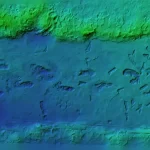New Scientist
Image: Kinez Riza
We may have finally found the ancestors of the mysterious miniature Homo floresiensis, aka the hobbit. A new cache of hobbit-like remains uncovered on the island of Flores answers at least some questions in the decade-long quest to understand the identity and origins of this tiny ancient hominin.
The hobbit stood about 1 metre tall and the single skull found so far has a braincase no larger than a chimpanzee’s. At the site where hobbits were originally found – a rock shelter called Liang Bua – the species lived between 190,000 and 50,000 years ago. Exactly where it came from, though, is a matter of heated debate.
One idea is that it evolved from a small early hominin species like H. habilis or the even more primitive Australopithecus, so far known only from fossils in Africa. Another is that a group of larger bodied hominins – H. erectus – reached the island of Flores about 1 million years ago only to shrink because of a lack of predators and scarce resources, a process called island dwarfing.
A third option, championed by a small but vocal group of researchers, is that the hobbit is just a small-bodied member of our own species, with the single small skull being the result of disease.
The new remains – six teeth, a fragment of jawbone and a tiny piece of skull – don’t settle the issue, but Yousuke Kaifu at Tokyo’s National Museum of Nature and Science and his colleagues think they back the shrunken H. erectus theory. Read more on newscientist.com…








